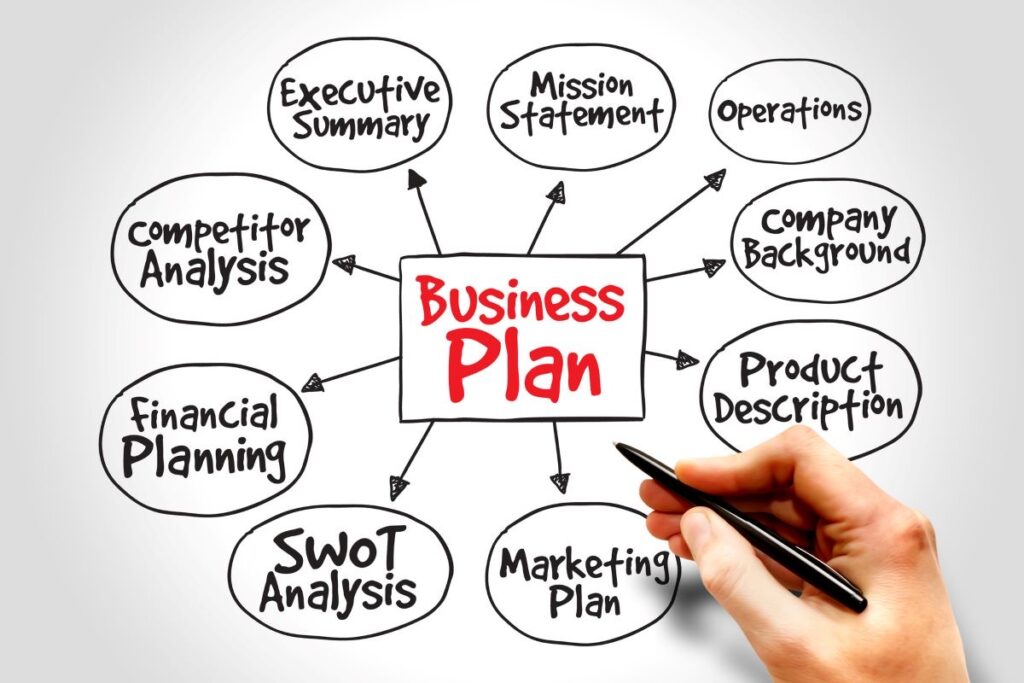Your 1 Page Business Plan (aka,Your BAM Lean Canvas)

This is the 7th in a series on Starting a BAM Business
Welcome back, trailblazers! We’re on the 7th leg of our journey to launching a Business as Mission (BAM) venture. This week, we’re diving into the Lean Canvas, a one-page business plan that’s perfect for startups and innovators. If you’ve been following along, you already have the vision, but now it’s time to put it into a streamlined, actionable format.
What is a Lean Canvas?
A Lean Canvas is a single-page business model template that helps you deconstruct your idea into its key components. Think of it as a roadmap, guiding you from concept to execution without getting bogged down in unnecessary details. It’s lean, mean, and ready to kick your BAM business into high gear.
Why Lean Canvas?
– Simplicity: It’s straightforward and easy to understand.
– Focus: It forces you to concentrate on what matters most.
– Adaptability: It’s designed to evolve with your business.
– Investor Friendly: Smart investors love a lean canvas as opposed to a multi-page “pitch deck.”
Getting Started with Your Lean Canvas
Grab your favorite pen, a cup of coffee (or tea if you prefer), and let’s get down to business. For a template of the Lean Canvas, simply send us an email with your request at info@thirdpathinitiative.com. Here’s a breakdown of the Lean Canvas sections and how to tackle each one:
1. Problem
– Identify the top three problems your business aims to solve. Think about the pain points your target audience faces.
– Example: If your BAM business is a fair-trade coffee shop, the problems might include: unfair wages for farmers, lack of quality coffee, and limited community spaces.
2. *Customer Segments
– Who are your primary customers? Define your target audience as specifically as possible.
– Example: Coffee enthusiasts, local community members, and consumers.
3. Unique Value Proposition (UVP)
– What sets your business apart? This is your elevator pitch.
– Example: “Bringing the world’s best coffee to your neighborhood, with a mission to empower farmers and build community.”
4. Solution
– Outline the top three features or services your business offers to solve the problems identified.
– Example: Direct trade coffee sourcing, premium quality brewing, and a cozy, community-oriented café.
5. Channels
– How will you reach your customers? Consider both direct and indirect channels.
– Example: Social media marketing, a user-friendly website, local events, and partnerships with community organizations.
6. Revenue Streams
– How will your business make money? List your primary and secondary revenue sources.
– Example: Coffee sales, merchandise, and hosting community events.
7. Cost Structure
– What are the major costs involved in running your business? Include both fixed and variable costs.
– Example: Coffee beans, staff wages, rent, and marketing expenses.
8. Key Metrics
– What indicators will you track to measure success? Focus on actionable metrics.
– Example: Monthly sales, customer footfall, social media engagement, and repeat customers.
9. Unfair Advantage
– What gives your business a competitive edge that’s not easily replicable?
– Example: Direct relationships with coffee farmers, a unique community focus, and an exceptional customer experience.
Making it Work
dance, check out the Third Path online course, “Creating Your BAM Lean Canvas.” It offers a deeper dive into each section with real-life examples and expert tips.
Real-Life Example: The Coffee Haven
Let’s say you’re starting a BAM coffee shop called “The Coffee Haven.” Here’s how your Lean Canvas might look:
– Problem: Unfair wages for farmers, poor coffee quality, lack of community spaces.
– Customer Segments: Coffee lovers, locals, ethical consumers.
– UVP: “The world’s finest coffee, empowering farmers and fostering community.”
– Solution: Direct trade coffee, high-quality brewing, cozy community space.
– Channels: Social media, website, events, partnerships.
– Revenue Streams: Coffee sales, merchandise, events.
– Cost Structure: Coffee beans, wages, rent, marketing.
– Key Metrics: Sales, footfall, engagement, repeat customers.
– Unfair Advantage: Direct farmer relationships, community focus, exceptional service.
Final Thoughts
Creating a Lean Canvas for your BAM business is a crucial step in turning your vision into reality. It helps you clarify your ideas, identify potential obstacles, and strategize effectively. So, roll up your sleeves, get your Lean Canvas filled out, and start bringing your BAM dream to life!
For more information on Business as Mission, we recommend the online course, “Creating Your BAM Lean Canvas” at this link— https://thirdpathinitiative.com/all-courses . It is available in 6 languages: English, Spanish, Azeri, Russian, Ukrainian, Romanian. Other resources include https://businessasmission.com and Business as Mission by Michael R. Baer available at https://www.ywampublishing.com/p-961-business-as-missionbrthe-power-of-business-in-the-kingdom-of-god.aspx
